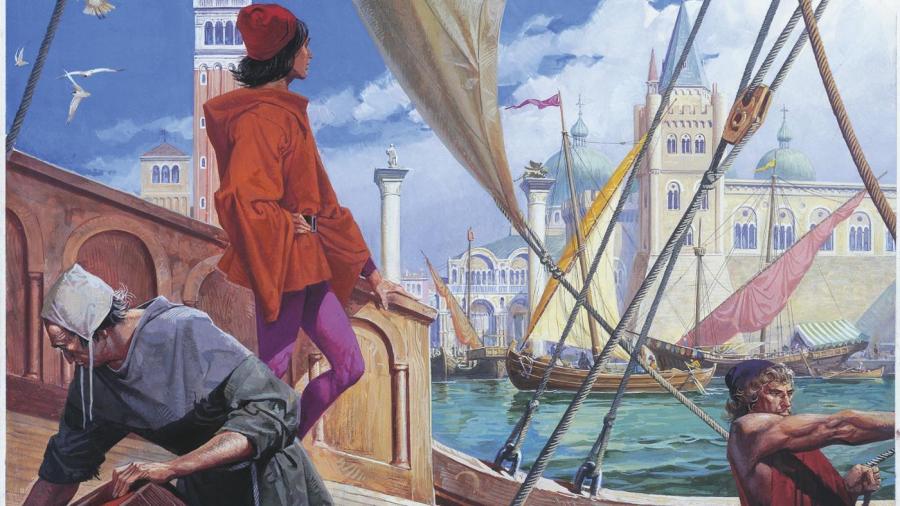What Did Marco Polo Bring Back From China?

The most significant and enduring things Marco Polo brought back from China were information and inspiration. During his travels in the East, Polo saw many things that were utterly foreign and new to Europeans, and his later account of his travels generated immense interest among his Western contemporaries. Similarly, his adventures summoned other Europeans to invest in exploration.
Most of what is known of Marco Polo’s travels in China come from his own hand, so the source is not exactly unbiased. However, taken at his word, he ultimately traveled extensively there, eventually becoming an envoy to the Mongol ruler Kublai Khan. In this enhanced capacity, Polo witnessed phenomena all over the empire, including a vast and astonishingly efficient system of communication and roadways. Additionally, Polo became fascinated with the Chinese usage of paper currency, an idea yet to be fully pondered in his native Europe. He visited Kashgar and Hetian, locations celebrated for beautiful jade. He also visited desert grottoes adorned with magnificent Buddhist carvings.
After Polo returned home to Venice in 1295, he became embroiled in the city’s war with the Genoans and was ultimately imprisoned. While incarcerated, Polo wrote what later became his famous account of his travels, which motivated future generations of explorers to find wealthy and exotic lands — generations such as that of Christopher Columbus, an explorer thought to have had his own personal copy of Polo’s book. While some speculate that Marco Polo brought back material things, such as pasta from China, these stories may prove more legend than fact. According to Culinary Lore, Polo mentions encountering noodles in China, but the text suggests that he was comparing the noodles he saw abroad with those he was already familiar with in Europe.





